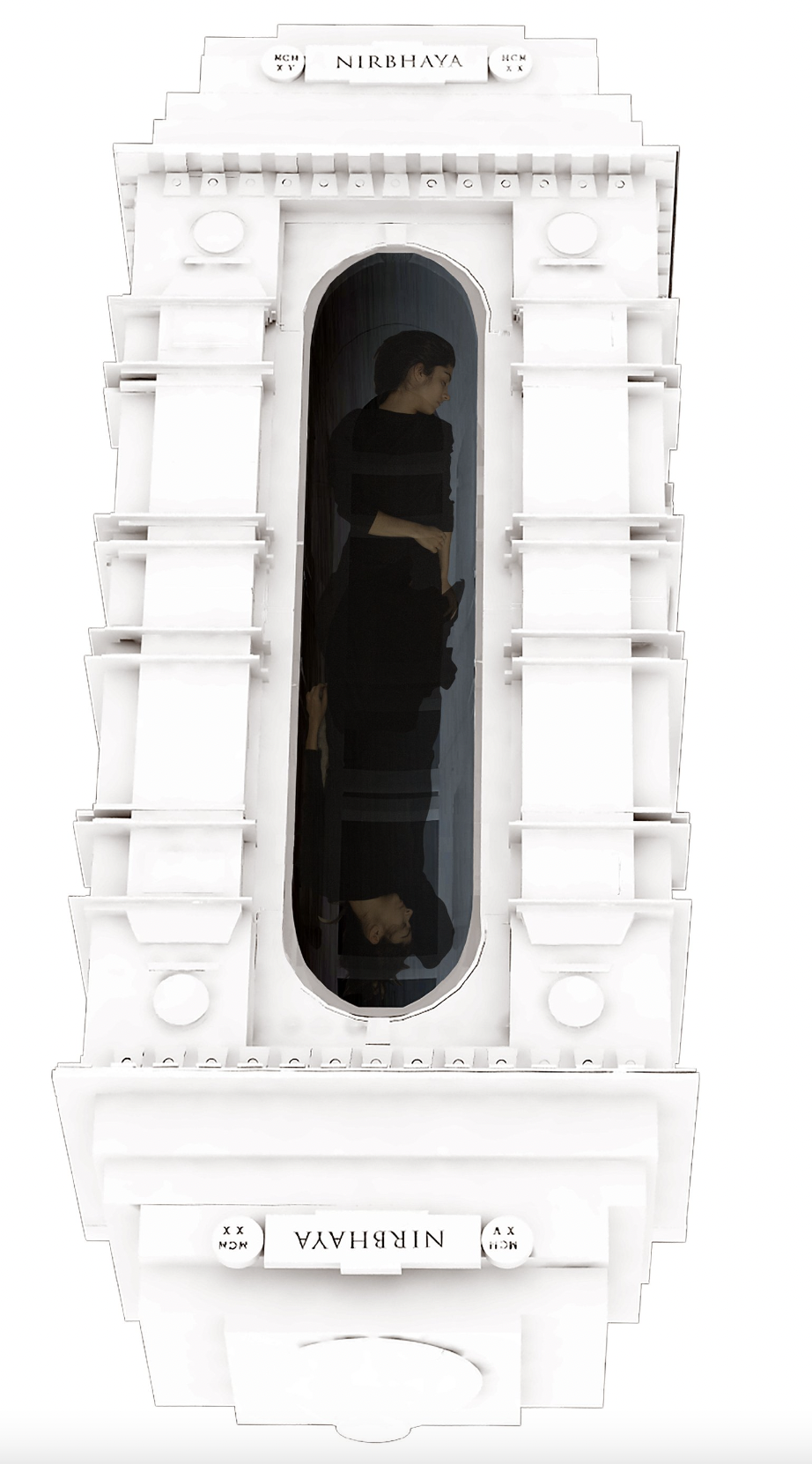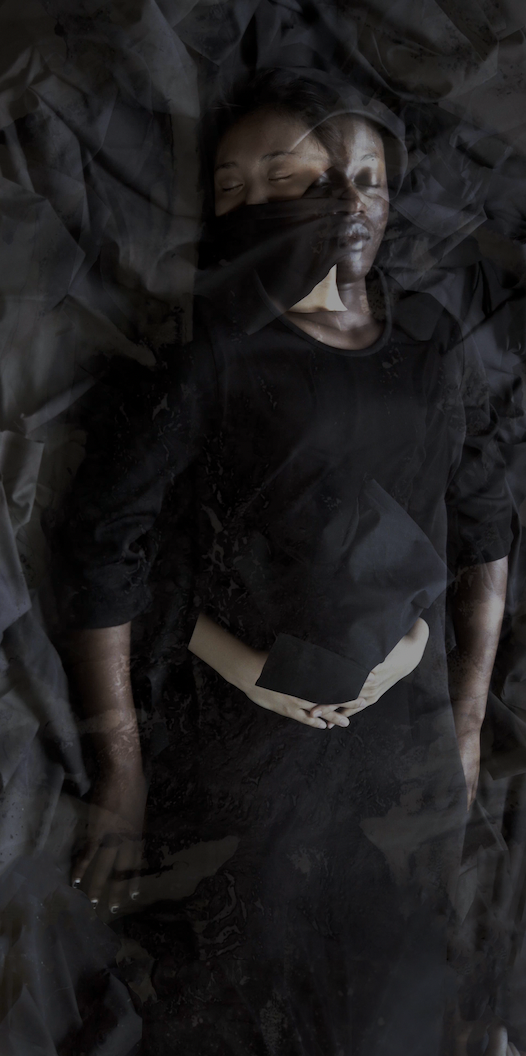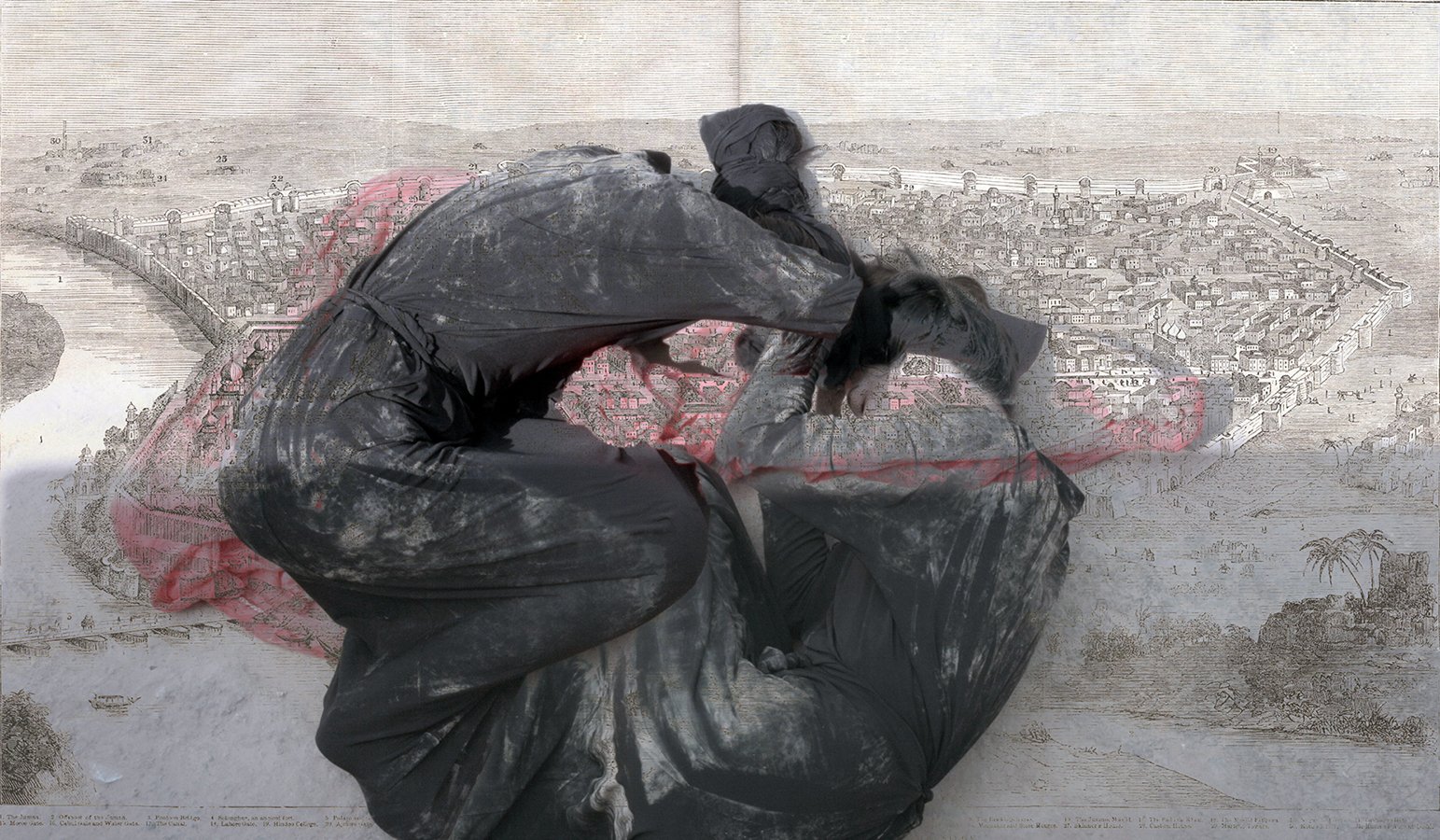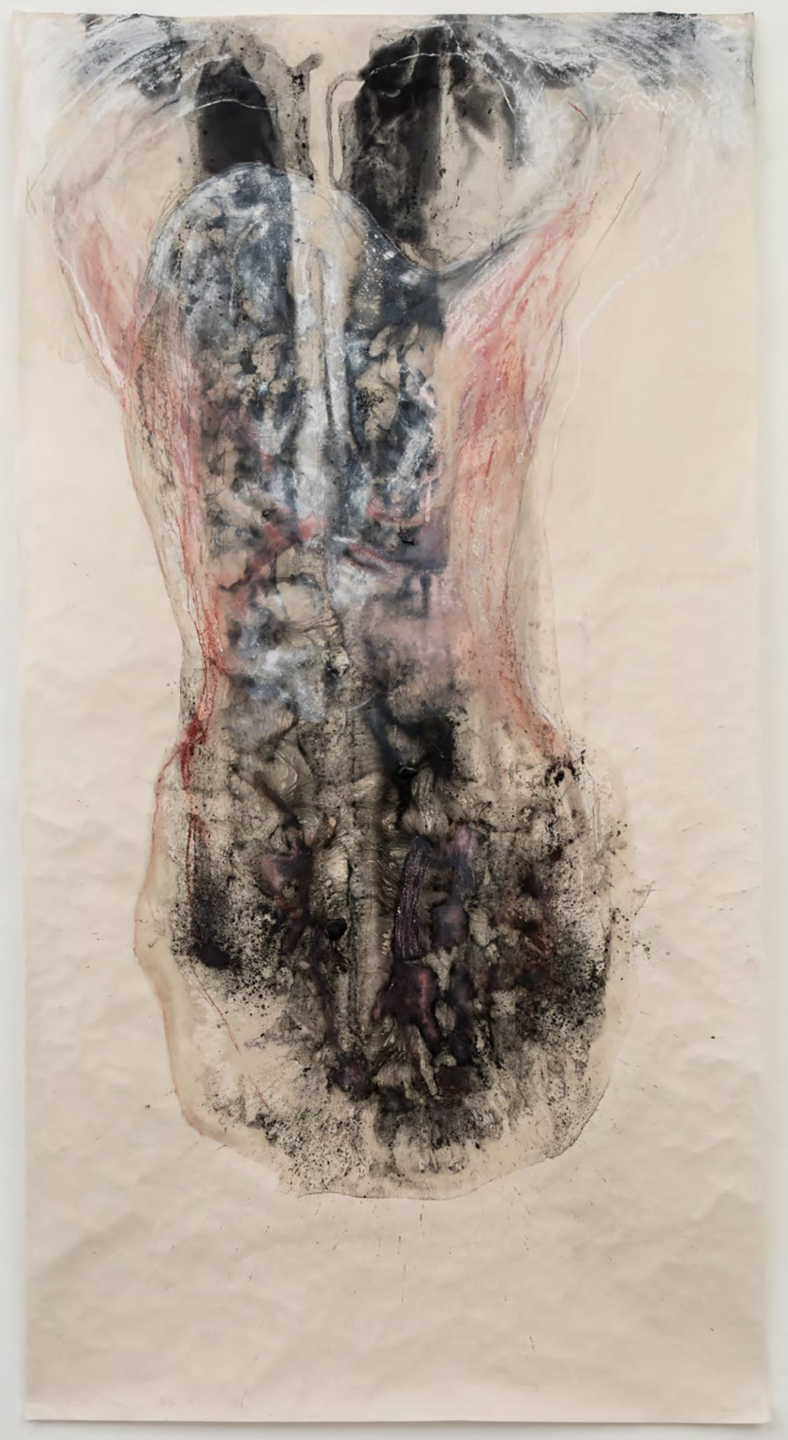monika weiss (nirbhaya)
Nirbhaya [1]
by Monika Weiss
published in Sculpture today 4 / anti-monument: non-traditional forms of commemoration (2019) edited by Eulalia Domanowska and Marta Smolińska, and in Traces of Sisterhood (TRACTS) published by Akademia Sztuk Pięknych in Warsaw (2022)
I. Lament
Language is a sovereign system that signifies and exists in relation to what it describes, but at the same time retreats, becoming pure language. In my art, lament questions language, polluting its purity. As a form of expression that arises from speech, lament represents the moment when speech and words break down, as well as the moment of facing the loss of meaning. Lament is the sound and silence of trauma. In my work, lament and body are intertwined because lament - the space of postlanguage - is a psychosomatic experience and act. It is an ever-changing space of historical, cultural and social dimensions. It is an act of symbolic resistance, of leaving signs and traces of presence in opposition to the heroic fantasies of conquest and power.
In my projects, history is shown from the collective viewpoint of those who are or were marginalized, oppressed, forgotten, erased or destroyed. I work with traces, remnants, post-histories, postmemories, archives and fragments. Being neither a witness nor a survivor, I invite others to spend time in my films, sound installations, sculptures, drawings and public projects, which is to spend time in the space of lamentation understood as a form of expression that comes after language.
Lament is an extreme expression of despair in the face of loss. As Judith Butler writes, “grief furnishes a sense of political community of a complex order, and it does this first of all by bringing to the fore the relational ties that have implications for theorizing fundamental dependency and ethical responsibility.” [2] In ancient Athens, public acts of mourning were legally prohibited and punished. Lament was recognized as pollution of the rational and masculine space of the city with the dirt of despair. In many cultures, women practiced organized group lamentation rituals, in response to the absurd and grotesque loss of life through war. Lament, especially when shared with others, is an act of political power, not just a response to individual loss. The idea of the archive, understood as a record of phenomenological experience, appears in my art in an attempt to seek meaning beyond language, and beyond history understood as a history of violence. Lamentation takes a form of expression that is excluded or expelled from language - the latter understood as a system or structure of meaning in relation to événement. As a loss of language, the lament traverses the flat surface of the archive, becoming music.
In the oldest, archaic examples of rituals of lamentation, e.g. in ancient Greece, the relationship between the world of the living and the world of the dead takes place as a symbolic dialogue between two beings, one present and one absent, as if located on the other side of the boundary. This borderline position often means that the lamenting protagonist finds herself between two antiphonal groups of mourners [3]. Such an imaginary dialogue between the traveler and the tomb was imbued with austere brevity, characteristic of the archaic style, which later developed into a refrain, incantation, repetition and echo. The primary form that I work with in my most recent films and sound-music compositions, is the ancient ternary form of Lament, A—B—A (sometimes called the song form), which is possibly the oldest known form of music. In ternary form, the initial address would be followed by a response (i.e. recollection of past events), and finally the reiteration of the initial address. The oldest known forms of archaic Lament are meant as an imaginary dialogue with those who are no longer here. This dialogue later developed into the musical and poetic forms of refrain and choral incantation, evoking suspension of time. The specific technique of montage that I employ to construct my films is based on the overlapping and reversal of images and sounds to create a space of suspended and circular time akin to this method of incantation.
II. Two Laments (19 Cantos)
In 2014, curator Amit Mukhopadhyay, based in Kolkata, India invited me to propose a public project for New Delhi. After a period of intense and intuitive research, I focused on two events which I understand as two wounds in the space of New Delhi: the India Gate monument (1921), designed by Edwin Lutyens as a copy of the Arc de Triomphe in Paris, and the horrifying gang rape on a moving bus (2012), of a young woman posthumously named Nirbhaya (“Fearless” in Hindi), who subsequently died from internal wounds.
Both events – wounds are related to a specific city, but in my art they become catalysts for a series of projects of global, and also double nature, where colonization of cities and colonization of bodies are intertwined in their meaning. Subsequently the title of the cycle of films/sound compositions became Two Laments (19 Cantos), 2015-2020, a work that later inspired the monument/anti-monument Nirbhaya.Two Laments (19 Cantos) is a cycle of short silent films, each between 2 – 30 min. and a series of sound compositions for individual voice, chorus and abstract soundscape. As I was beginning this work, I was concerned about not being from India, but a dear friend, acclaimed Indian poet Meena Alexander convinced me to continue with my project. In each Canto I filmed one woman performing silent gestures of lamentation as a kind of offering of beauty and dignity to both Nirbhaya and to the city of Old Delhi, which was destroyed by the British in 1858. In one of the 19 films a poem by Meena Alexander appears, Moksha, dedicated to Nirbhaya.
On 16th December 2012 in Munirka (Delhi), 23-year-old Jyoti Singh (posthumously named Nirbhaya) was brutally gang raped on a bus moving through the city, and subsequently died from inflicted wounds. In the transcripts of the court trial I found a statement from one of the perpetrators who remembered seeing a red ribbon coming out of her body. The red ribbon, which upon further investigation turned out to be her intestine, meant that her insides were pulled out. This fact became a traumatic catalyst for my cycle Two Laments (19 Cantos). Dedicated to Nirbhaya (“the Fearless One”, sometimes also referred to as the “Daughter of India”), Two Laments is also inspired by Jan Kochanowski's Treny (19 Laments), written after his daughter's death.
Nirbhaya is a contemporary flaneuse, a young woman who treats her city as a place to move through freely, to be present and visible. The flaneur, who is also, and perhaps forever, un voyeur, is a figure culturally rooted in the context of public space as a priori belonging to men, a symbol of the male right to gaze and to be seen. Nirbhaya is punished for her specific behavior within the space of the city. According to testimonies of Nirbhaya’s rapists and murderers, her rape, torture and subsequent death was supposed to be a lesson given to all women. She is punished and executed in the public space of the city precisely for behaving as if she were a free individual, i.e. a man, inhabiting the city space as its rightful citizen.
The rape of 2012 was a grotesque and extreme form of prolonged torture, which took almost two hours, while the bus was driving through the city of Delhi, unchallenged, cutting through its center with a red ribbon of indifference. Recalling the closed trains heading towards Buchenwald through the center of Weimar – their tracks very close to inhabited houses, their wagons leaking screams and pleas for help – the bus cutting through the body of Delhi is both a proof and an accusation of all cities around the world. Rapes committed in cities around the world are acts of war and aggression that go beyond desire and sexuality, in fact they exclude them. The rape of a woman is often culturally tied to the notion of punishment for her freedom and understood as a form of sacrifice, referring to the concept of homo sacer. It is also actively removed from cultural memory. The city – understood as a public space – protects its heroic memory, which should not be polluted by the memory of low, non-heroic crimes committed against women. We need monuments engraved with the names of rape victims and, consequently, we need monuments to women who died as victims of war waged against them.
19 Cantos is a cycle of film projections and sound compositions. Extremely slow, gradual and repeated gestures of lamentation are performed by female volunteers, whom I filmed in Delhi, St. Louis, Warsaw and in my New York studio. In most of the 19 Cantos, thanks to the film montage, the presence of Nirbhaya is evoked as a double presence. The slowness of time and of movement, as well as the specific tempo that I create in my work, are intended to extend but also to veil the symbolized moments of trauma. I call this process unforgetting. In Two Laments (19 Cantos), the red ribbon becomes a veil that becomes a sea that swallows Delhi, the meta-city that represent all cities in the world bearing marks of historical trauma.
In the 1858 issue of Illustrated London News, a large drawing documents Old Delhi from a bird's eye view just before its siege and its destruction by the British Empire. The drawing is entitled The Day before the Siege. The accuracy and beauty of the laborious craftsmanship of this drawing reflects the details of a city doomed to death, a city that rose in anger against colonial occupation, a city whose architecture was not in line with the aspirations of high, European culture. In response to the architecture and urban structure of Old Delhi, full of tangled, non-geometric lines, Edwin Lutyens designs New Delhi, modeled on Paris, full of geometry and European taste. He places India Gate (1921) at its center, as an enlarged version of the Arc de Triomphe. From my point of view, this is where the architectural rape of the city occurs. In Canto 3Nirbhaya seems to lie on the drawing-map The Day before the Siege. Moving very slowly with her eyes closed, her body becomes doubled, becoming its own echo, a repetition. Dressed in a long black gown that gradually becomes soiled with the dirt, as if stained by the city itself – the doubled Nirbhaya covers the city with her body and her veil, slowly disappearing, leaving traces and headscarves[1] on its surface.
III. Nirbhaya
In 2018 Eulalia Domanowska, on behalf of the Centre for Polish Sculpture in Orońsko, invited me to propose a public project, as part of the permanent collection and Sculpture Park in Orońsko. I proposed Nirbhaya, a monument/anti-monument devoted to all women around the world who continue to experience violence. A sister, long-term version of the project is scheduled to open on Dag Hammarskjold Plaza, a Gateway to the United Nations in New York. Nirbhaya is presented at Dag Hammarskjold Plaza in partnership with the New York City Parks Department of Art and Antiquities, World Council of Peoples for the United Nations, and Streaming Museum with support from New York State Council on the Arts (NYSCA) and fiscally sponsored by New York Foundation for the Arts (NYFA). Since 2019 an architecture company Lamar Johnson Collaborative (LJC) supports technical production of the project.
Built to reference a triumphal arch, Nirbhaya is a sculpture situated within public space, resembling ancient sarcophagus and filled with water. A moving image at 1:1 scale is projected into the water, depicting a woman dressed in a long black dress and veil. Her silhouette moves very slowly, as if she were lying or dancing inside the sarcophagus. The woman gradually becomes a tree. Her silhouette and face alternate, composed of dozens of women I continue to film, including myself. Nirbhaya is a response to two forms of rape: colonial and individual. In this work I lay triumphal arch on the ground and mirror it with itself, transforming it into a horizontal vessel. I draw attention to the heroic verticality of typical, traditional war monuments, which, through their sanitized language of architecture, usually ignore the truth about war – a crime and a tragedy for all involved. Metamorphosis/Dafne, 2021, an ambisonic sound composition devoted to victims of gendered violence, will be included as an online sound companion to the Nirbhaya monument at Dag Hammarskjold Plaza. Inspired by the story of Daphne (“Dafne” in Polish), the mythological nymph who escaped rape by self-transformation into a tree, the piece evokes the escape from the violence marked by death, but also by reincarnation into a new life form.
IV. Unforgetting
The gang rape and slow, prolonged killing of Jyoti Singh, as a lesson to the flaneuse, represents crimes committed against women around the world. Nirbhaya is not a project about one city or one country. The red line left behind by the bus crossing Delhi stains and crosses national, historical, geographical and cultural borders. The India Gate monument, raised by the British Empire at the central point of New Delhi, modeled on the Arc de Triomphe in Paris (commemorating the Indian soldiers who died for the Empire during World War I) represents a typical heroic style of memory, especially European, institutionalized and devoid of any embodied trace of death and war. Nirbhaya project challenges this monumental verticality, heroic masculinity and colonial criminality – usually commemorated in a reduced form of public memory. My project proposes an intimate, embodied unforgetting of the trauma of rape and torture of women everywhere. At the same time it is a tribute to the suffering and heroism of women, the Fearless Ones. It proposes to rename victims as heroes and invites to take part in the horizontal and fluid form of new monumentality and transformation.
At this moment in time, when both in Poland and in the US we try to reckon with our own public memory and history, Nirbhaya asks: Who is remembered, who is forgotten, and how do we unforget violence, in order to remake a world without it? Violence against women and girls has been described by the World Health Organization as a global public health pandemic: one in three women worldwide experiences physical or sexual violence in her life. Nirbhaya asks questions about whom we commemorate in the public sphere, because the question of visibility and invisibility in public space (as philosopher Hannah Arendt would put it) is directly related to how we learn history and therefore how we might reimagine the future. It is important to witness this work now because violence against women is only rising. Nirbhaya’s message closely relates to the fifth goal of the United Nations, which is gender equality and human rights.
Monika Weiss, New York, 2019, revised in 2022
Notes
[1] Nirbhaya appears in this text in italics when the word refers to my project, and without italics when the word refers to a name given posthumously to Jyoti Sing.
[2] Judith Butler, Precarious Life: The Powers of Mourning and Violence, New York: Verso, 2004.
[3] Margaret Alexiou, The Ritual Lament in Greek Tradition, second edition, Oxford: Rowman and Littlefield Publishers, 2002.




